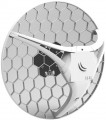4G (LTE)
4G (LTE) mobile speed supported by the device.
All modern LTE equipment is assigned one category or another, which directly affects the data transfer speed. This paragraph clarifies both this category and specific speed indicators, both in two parameters - for reception and transmission. The transmission speed is always significantly lower, but given the specifics of mobile Internet access, this moment is usually not critical.
Note that equipment with different speed categories will be quite compatible with each other, however, the throughput will be limited by the capabilities of the slower device. It is also worth saying that this paragraph indicates a theoretical maximum; practical indicators can be noticeably lower (depending on the quality of the coverage, air load, and the features of specific electronics). However, a router with a higher speed category will in practice be faster.
Control
Management methods and protocols supported by the router.
—
SSH. Abbreviation for Secure Shell, i.e. "Safe shell". The SSH protocol provides a fairly high degree of security, because. encrypts all transmitted data, including passwords. Suitable for managing almost all major network protocols, but requires a special utility on the host computer.
—
Telnet. A network management protocol that provides configuration via a text-based command line. It does not use encryption and does not protect transmitted data, and is also devoid of a graphical interface, which is why in many areas it has been supplanted by more secure (SSH) or more convenient (web interface) options. However, it is still used in modern network equipment — in particular, as a means of managing FTP servers.
—
Web interface. This function allows you to open the router's management interface in a regular Internet browser. Thus, to access the settings, you do not need special software — just a regular computer or even a smartphone / tablet is enough (modern mobile browsers are close to desktop ones in terms of capabilities).
—
SNMP. Abbreviation for Simple Network Management Protocol, i.e. "simple network control protocol". It is a standard part of the common TCP/IP protocol on which both the Internet and many local networks are built. I
...t uses two types of software — "managers" on control computers and "agents" on managed computers (in this case, on a router). The degree of security is relatively low, but SNMP can be used for simple management tasks.
Note that this list is not exhaustive — some routers have other, more specific management capabilities (such as the EEM event manager in Cisco devices).CPU
The model of the processor installed in the device. The processor is responsible for processing network traffic and running software. Knowing its name, you can get more detailed data on the speed capabilities of the equipment and understand how much such a powerful or, on the contrary, mediocre element is needed on board. In new models of Wi-Fi equipment, coprocessors or so-called NPU modules are often installed, which relieve the load from the main processor.
CPU cores
The number of cores in the processor installed in the device. The core in this case refers to the part of the processor that executes one thread of instructions. Accordingly, the presence of multiple cores allows you to work with multiple threads simultaneously, which has a positive effect on performance.
CPU speed
The number of cycles per second that the processor produces in its normal operating mode. A clock is a single electrical impulse used to process data and synchronize the processor with the rest of the computer system. Different operations may require fractions of a clock or several clocks, but anyway, the clock frequency is one of the main parameters characterizing the performance and speed of the processor — all other things being equal, a processor with a higher clock frequency will work faster and better cope with significant loads.
RAM
The amount of random access memory (RAM) provided in the device. The amount of "RAM" is one of the indicators of the power of the device: the larger it is, the higher the speed and the better the device will cope with "heavy" tasks.
Power consumption
Power consumed by network equipment during operation. Knowing the indicator of energy consumption, you can, for example, calculate the battery life of equipment from an uninterruptible power supply or choose a suitable “uninterruptible power supply”.
Operating temperature
The range of ambient air temperatures at which the router is guaranteed to maintain normal operation.
All such equipment normally tolerates temperatures typical for residential or office premises. Therefore, it makes sense to pay attention to this indicator mainly in cases where the router is installed in unheated rooms or outside. The main value in this case is the lower limit of the range: not every device is able to normally tolerate temperatures below zero. On the other hand, most cold-resistant routers can withstand temperatures
down to -20 ° inclusive, and some models can be used
at -40 °C and even lower.
As for the upper limit, it is usually about +50 °C — even in hot countries it is extremely rare to find such an air temperature. At the same time, under the action of sunlight, the body of the device can heat up to higher temperatures, so you should avoid installing the equipment in direct sunlight.

